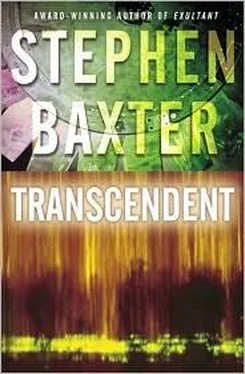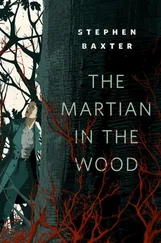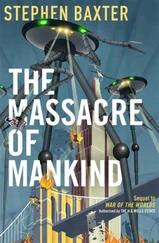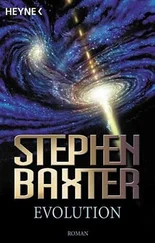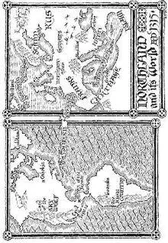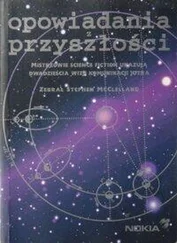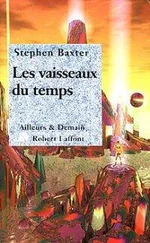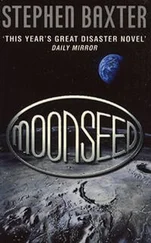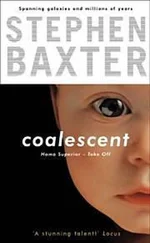And there was something wrong, a note out of place in this great symphony of manufacture and assembly. There was something not quite right with the heart, she saw, a place where the mindless self-organization had gone awry. Nothing was perfect; this was not the only flaw in the growing body. Perhaps it would not matter.
As his body and nervous system developed, the child’s mind continued to evolve.
At first there had been no sense of time, or space. There were only abstractions like separateness, one thing from another, and only events, disconnected, acausal. Time gradually emerged as a sense of events in sequence: first the hands, then the cellular Die-back, then the separating fingers, one after another. Space came after that, as the body itself grew in extent and emerged from formlessness into a tool that he could, in a limited fashion, use to explore the space around him. It was a passive exploration at first, not much more than a dim realization that the universe had to be at least big enough to encompass his body. But then he had fingers to stretch out, legs to kick with. Soon he could feel the sac that contained him, could kick against its walls, and he began to get the sense that even beyond this sac was a wider universe, perhaps including beings more or less like himself.
That sense deepened when sight arrived. He could make out a dim ruddy glow, that waxed and waned. Sometimes, when the light was at its brightest, he could even make out the pale fishlike shape that was his own body, the rope that anchored him to the walls around him.
But the light would dim and return, dim and return, and a new sense of time imposed itself on him: not a time dictated by the events of his own body, but a cycle that came from a wider world outside him. There were processes that went on independently of him, then; he was not the whole universe — even though it still felt like it.
Then there were sharper sensations, brought to him in a rich stream of blood. The nourishment he received could be rich or thin, familiar or strange. Sometimes it was even intoxicating, mildly, so that he thrashed uncomfortably in his tank of flesh. This came from the mother, he knew on some deep level.
For the child in the womb, here was still another lesson to learn. Not only was there a universe outside this womb of his, but there were creatures out there who imposed their will on him: even his mother, who lived her own life, while cradling his. It was a gathering awareness of separateness that presaged the child’s ultimate ejection from this crimson comfort into the harsher, much less sympathetic world beyond the walls of the womb.
But now came the pain.
It was extraordinary. It flooded the child’s still-developing nervous system as if hot mercury had been injected into it. The walls of the womb flexed, pressing at the helpless body, overwhelming his struggles. There was a new taste on his soft pink tongue, a taste he could not recognize, was not supposed to know, not yet. But Alia recognized its iron tang. It was blood.
Something was badly wrong.
The pain passed. The child relaxed, exhausted. Groping in the dark he pushed one tiny thumb into his mouth and sucked. Alia, floating with him, longed to comfort him. But the memory of the pain clung deep, and nothing was quite as it had been before, or ever could be.
Now there was another intrusion into this amniotic refuge. It was something sharp, and it was cold, unbelievably so in this little universe of soft, cushioning flesh. A probe, Alia thought, pushed in from outside. Was it possible somebody out there was trying to help this damaged child? But if so, how crude a way to do it! The child thrashed, distressed down to the core of his being. The probe sucked away some of the child’s flesh and withdrew. The child folded over on itself, scrabbling at its small face with its hands. Again peace returned, like an echo of the endless tranquillity from which the child had been separated at its conception. But it did not last long.
And when the pain came back, Alia knew that there would be no respite. Again the child shrieked silently, but there was nobody to hear him; again the womb walls flexed helplessly, as if trying to crush the child out of existence.
There was another sharp intrusion from outside. But this was much more drastic than the earlier probing. A blade slashed uncompromisingly through the wall of the womb, and light poured in. The child thrashed and grasped; it was as shocking as if the sky itself had cracked open. Huge forms descended and something smooth and cold closed around his torso — hands, gloved perhaps? And now, in the ultimate horror, he was lifted up, pulled away from the womb into a sharp coldness, a new realm of bitter light. But he could feel the cord in his belly tugging him back to the womb.
Amidst all this unimaginable horror the pain returned again. It was even worse now. It seemed to emanate from the core of his being, his chest and belly, and flooded out through his limbs to his tiny fingers, the thumb he had sucked. It was as if some immense hard object was slamming against his chest, over and over.
He was aware of motion, a smooth surface under him; he had been laid down. Then came a sharp pain at his belly as the cord was cut. Immense objects, perhaps fingers, dug into his mouth. But that pain flooded through him still, a new burst with every impact of those invisible fists on his chest.
He could see only a blur, only light, smeared with a crimson film of blood and amniotic fluid. But objects floated through that blur, looming down. They were faces, human faces. Even as the terrible pain continued, the child struggled to make out the faces — a first reflex of his nervous system, Alia knew. He looked for smiles, for welcoming. But there were no smiles here. And one of those faces, even though it was just a moonscape of patches and blurs, looked oddly familiar to Alia.
It was Michael Poole.
But now the faces receded, and darkness washed over the child’s vision. That pounding pain continued, and he thrashed feebly, even now fighting. But he was tiring quickly. There was a kind of question in his mind, Alia realized, an expression of a deep longing. This new darkness — was it the womb? Was he being returned to the place he belonged?
Alia could not answer him. She was only an observer. And yet she replied: Yes. There is nothing to fear. Lie still.
The darkness rose up around him now; the faces had gone, vanished forever. The miracle of biological self-organization and emergent awareness was dissipating, crumbling, and so was his mind.
At least the pain stopped.
The day after that first integrated test was launched, Edith Barnette returned to her home in DC.
She took with her good wishes from our confused little crew. It meant a lot that such a grand old lady had hauled ass all the way to Alaska to see it, for she had demonstrated concretely that there was support for our work out there, if only we could tap into it. We were a somewhat fragile alliance of partners, with both Shelley’s concerns and EI always having their eye on the need to make an eventual profit. Barnette’s endorsement would help keep their boards and shareholders happy — or anyhow nobody was talking about pulling out yet.
In the days that followed, we dug into the work once more.
What Barnette had witnessed was only the beginning of the integration trials, the first tentative burrowings of our moles into shallow sea-bottom sediments. It had mostly gone well. Around ten percent of the Higgs-field power packs had suffered glitches of one sort or another, but as Higgs was the one really novel technological element, you had to expect unpleasant surprises.
Most of the smart moles had behaved much as expected, but the tentative network they had begun constructing hadn’t been of quite the quality we’d hoped for. Small-world networking: a useful, robust network should be designed around a number of key nodes with plenty of links between them, so you can get from one point to another with very few steps, and yet the whole thing is robust to failure. As we wanted our refrigerant network to be working from the moment we put it in the ground, we were seeking a kind of rolling optimum, with it being as good as it could be at every stage of its extension. In those first few hours of work, what we built was good, but not quite as good as that.
Читать дальше
